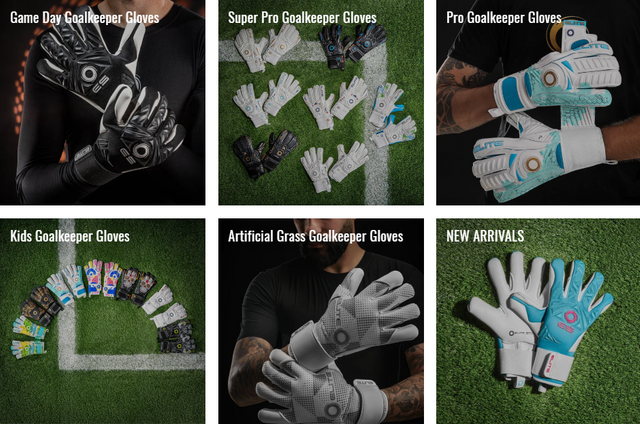Soccer Gloves: The Essential Gear Every Player Should Know
When it comes to soccer, most players think of cleats, jerseys, or shin guards. But for goalkeepers—and even some outfield players—gloves are more than just accessories. They’re a vital part of performance, protection, and confidence. Whether you're defending your goal in a competitive league or training on a local pitch, having the right soccer gloves can make all the difference.
Gone are the days when gloves were just bulky pieces of fabric meant to cushion your hands. Today, soccer gloves are engineered with precision to enhance grip, support reflexes, and withstand high-impact saves. From professional keepers to youth athletes just starting out, gloves have become an essential part of the modern soccer game.
Why Soccer Gloves Matter So Much
The job of a goalkeeper is arguably one of the most high-pressure roles in all of sports. One mistake can decide a game. That’s why gloves are more than just hand protection—they’re an extension of a keeper’s instincts. Quality soccer gloves help goalkeepers secure the ball during tricky saves, punch it away with confidence, and catch it cleanly even in tough weather.
But soccer gloves aren't just about performance. They also protect the hands from injuries like finger sprains, turf burns, and hard impact. With the right pair, goalkeepers can play more aggressively and react more confidently—knowing their gloves will back them up.
The Different Types of Soccer Gloves
There are several types of soccer gloves, each designed for different needs. Understanding these variations will help you choose the best pair for your level and playing style.
- Match Gloves
Match gloves are designed for game-day performance. They feature high-grip latex palms, snug fits, and lightweight materials for agility. These soccer gloves prioritize precision and control, but they can wear out faster with heavy use.
Training Gloves
Built for durability, training gloves are perfect for practice sessions. While they may offer slightly less grip than match gloves, they’re made to withstand repeated dives and saves on various surfaces.All-Weather Gloves
If you're playing in rain, snow, or extreme heat, these gloves use specialized materials that maintain grip and comfort in challenging conditions.Finger Protection Gloves
These gloves come with spines or flexible inserts that prevent hyperextension, making them ideal for players who have experienced finger injuries or want added safety.
What Makes a Great Pair of Soccer Gloves?
Choosing the right pair isn’t just about picking your favorite color or brand. It’s about finding gloves that enhance your game and suit your environment. Here are the most important features to consider:
Palm Grip
This is where the magic happens. The palm latex determines your grip on the ball. Soft latex gives you better tackiness but wears down faster, while harder latex lasts longer and works well in training.Glove Cut
The "cut" refers to the way the glove fits and how the palm wraps around your fingers:
Flat Cut: Classic cut with a looser fit and larger catching surface.
Roll Finger: Latex wraps around the fingers for a tighter fit and more ball contact.
Negative Cut: Snug fit with internal stitching, perfect for players who want maximum control.
Hybrid Cut: Combines elements of all cuts for a customized feel.
Backhand Construction
While palm grip is crucial, don’t overlook the backhand. Quality backhands provide punch control and hand protection during deflections. Some even include shock-absorbing zones to enhance safety.Wrist Support
A solid closure system ensures your gloves stay firmly in place during high-action saves. Adjustable straps or wrap-around wristbands give better support and customization.
Caring for Your Soccer Gloves
To maximize the life and grip of your soccer gloves, regular care is key:
Clean after every use: Rinse gloves in lukewarm water to remove dirt and sweat. Don’t use harsh soaps or machine wash them.
Dry properly: Air-dry your gloves naturally. Avoid direct sunlight, radiators, or dryers, which can destroy the latex.
Store wisely: Keep gloves in a breathable glove bag to prevent odors and extend their performance.
With the right care, your gloves will last longer and keep performing at a high level through every training and match.
How to Know When It's Time to Replace Your Gloves
Even the best soccer gloves won’t last forever. Over time, the latex breaks down, and grip deteriorates. Here are a few signs it might be time for a new pair:
The palms feel slick or overly worn.
Stitching begins to fray.
You’re noticing more dropped balls or mishandled saves.
Your gloves have an odor or stiffness that doesn’t go away with cleaning.
If you're playing multiple times per week, consider rotating between a pair for training and another pair for match days to extend their lifespan.
Soccer Gloves for Different Age Groups
Youth Goalkeepers
For young players, comfort and protection are key. Gloves with extra finger support and easy-to-adjust straps help build confidence while learning proper catching technique.
Teen and Competitive Players
As skill levels increase, so should glove performance. Competitive players benefit from snug-fitting gloves with match-quality grip and more personalized cut styles.
Adult and Professional Athletes
Elite keepers require gloves that combine all the features—durability, tackiness, flexibility, and impact absorption. These gloves often use high-end latex and precision cuts for total control.
Final Thoughts: Gloves That Elevate Your Game
In soccer, confidence is everything. And for a goalkeeper, confidence starts with what’s on your hands. A great pair of soccer gloves isn’t just about performance—it’s about trust. Trust in your grip. Trust in your protection. Trust that when the ball rockets toward you, you’re ready.
Whether you’re playing under the lights on a Friday night or diving into the dirt on a Sunday morning, the right gloves will make you faster, stronger, and more fearless. So choose wisely, take care of your gear, and let your gloves help you play the game at your best.
